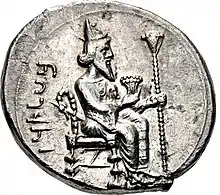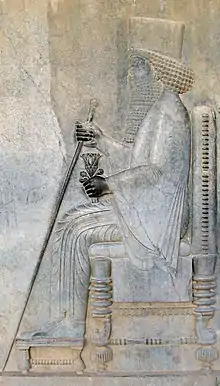Artaxerxes III
Ochus (Greek: Ὦχος, Ôchos; Babylonian: Ú-ma-kuš), better known by his dynastic name of Artaxerxes III (Old Persian: 𐎠𐎼𐎫𐎧𐏁𐏂 Artaxšaçā) was King of Kings of the Achaemenid Empire from 358 to 338 BC. He was the son and successor of Artaxerxes II (r. 404 – 358 BC) and his mother was Stateira.
| Artaxerxes III 𐎠𐎼𐎫𐎧𐏁𐏂 | |
|---|---|
| King of Kings Great King King of Persia Pharaoh of Egypt King of Countries | |
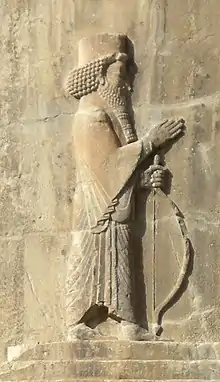 Rock relief of Artaxerxes III in Persepolis | |
| King of Kings of the Achaemenid Empire | |
| Reign | 358 – 338 BC |
| Predecessor | Artaxerxes II |
| Successor | Arses |
| Pharaoh of Egypt | |
| Reign | 343 – 338 BC |
| Predecessor | Nectanebo II |
| Successor | Arses |
| Died | August/September 338 BC |
| Burial | |
| Issue | Arses Parysatis II |
| Dynasty | Achaemenid |
| Father | Artaxerxes II |
| Mother | Stateira |
| Religion | Zoroastrianism |
Before ascending the throne Artaxerxes was a satrap and commander of his father's army. Artaxerxes came to power after one of his brothers was executed, another committed suicide, the last murdered and his father, Artaxerxes II died. Soon after becoming king, Artaxerxes murdered all of the royal family to secure his place as king. He started two major campaigns against Egypt. The first campaign failed, and was followed up by rebellions throughout the western part of his empire. In 343 BC, Artaxerxes defeated Nectanebo II, the Pharaoh of Egypt, driving him from Egypt, stopping a revolt in Phoenicia on the way.
In Artaxerxes' later years, Philip II of Macedon's power was increasing in Greece, where he tried to convince the Greeks to revolt against the Achaemenid Empire. His activities were opposed by Artaxerxes, and with his support, the city of Perinthus resisted a Macedonian siege.
There is evidence for a renewed building policy at Persepolis in his later life, where Artaxerxes erected a new palace and built his own tomb, and began long-term projects such as the Unfinished Gate.
Etymology
Artaxerxes is the Latin form of the Greek Artaxerxes (Αρταξέρξης), itself from the Old Persian Artaxšaçā ("whose reign is through truth").[1] It is known in other languages as; Elamite Ir-tak-ik-ša-iš-ša, Ir-da-ik-ša-iš-ša; Akkadian Ar-ta-ʾ-ḫa-šá-is-su; Middle Persian and New Persian Ardašīr.[2][3] His personal name was Ochus (Greek: Ôchos, Babylonian: Ú-ma-kuš).[4]
Background
Ochus was the legitimate son of Artaxerxes II and his wife Stateira.[4] He had two elders full-brothers, Ariaspes and Darius (the eldest).[5] He also had many illegitimate brothers born to concubine mothers, which the 2nd-century AD Roman writer Justin numbered to be 115.[6] Out of all the sons, it was Darius who had been appointed as the heir to the empire, thus receiving the royal privilege of wearing the upright tiara. However, Artaxerxes II's long reign frustrated the latter, who was already over 50 years old. Incited by the former satrap Tiribazus, he started plotting against his father to quicken his succession.[7][8] Darius expected that he would receive support from many courtiers, including fifty of his illegitimate brothers according to Justin.[8] A eunuch discovered the conspiracy, and as a result Darius was summoned to the court and executed, "along with the wives and children of all the conspirators" (Justin).[8] The right of succession then passed over to Ariaspes. However, Ochus, with the support of some eunuchs,[lower-alpha 1] created a series of ruses and allegations to make his legitimate brother Ariaspes go mad and commit suicide.[8] Artaxerxes II, who disliked Ochus, appointed his favourite illegitimate son Arsames as the new crown prince. He was, however, soon killed by Arpates at the instigation of Ochus.[8][7][10] Ochus was then finally appointed as crown prince, with Artaxerxes dying shortly after.[7][10]
Revolt of Artabazus
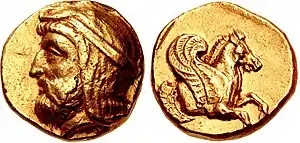
At his accession in 358 BC, Artaxerxes III demanded that all the satraps in western Anatolia were to disband their mercenary forces. This was done to diminish the power of powerful satraps and consolidate the power of the crown. Indeed, under Artaxerxes III's father, the satrap Datames had with the help of his mercenaries ruled a more or less independent state, while previously the Achaemenid prince Cyrus the Younger had almost managed to overthrow Artaxerxes II with the help of his mercenaries.[11] All the satraps followed his order and disbanded their mercenaries. Later in 356 BC, Artaxerxes III attempted to dismiss Artabazus II from his satrapy of Hellespontine Phrygia, which resulted in the latter revolting. His royal blood through his mother Apama, a sister of Artaxerxes III, may have made the latter vigilant towards him.[11] Artabazus' two brothers are Oxythres and Dibictus are also reported to have joined him, which implies that Artaxerxes III was targeting the whole family.[11]
Artaxerxes III sent the other satraps in Anatolia—Tithraustes, Autophradates and Mausolus—to suppress the revolt.[12] Artabazus quickly joined forces with the Athenian military commander Chares, who had acquired most of his disbanded mercenary unit. Together, they defeated the satraps in 355 BC and marched deeper into Greater Phrygia, ransacking the region.[13] Artaxerxes III quickly pressured Athens to stop supporting Artabazus by the threat of war.[14] Artabazus subsequently found a new ally in the Thebian general Pammenes, who supplied him with 5,000 soldiers in 354 BC.[15] Further defeats were inflicted on the Achaemenid forces, but Artabazus soon fell out with Pammenes, and had him arrested. In 354/3 BC, he ceased his rebellion and fled to Macedonia, where he was well-received by its king, Philip II.[16][17]
First Egyptian Campaign (351 BC)
In around 351 BC, Artaxerxes embarked on a campaign to recover Egypt, which had revolted under his father, Artaxerxes II. At the same time a rebellion had broken out in Asia Minor, which, being supported by Thebes, threatened to become serious.[18] Levying a vast army, Artaxerxes marched into Egypt, and engaged Nectanebo II. After a year of fighting the Egyptian Pharaoh, Nectanebo inflicted a crushing defeat on the Persians with the support of mercenaries led by the Greek generals: the Athenian Diophantus and the Spartan Lamius.[19][20] Artaxerxes was compelled to retreat and postpone his plans to reconquer Egypt.
Rebellion of Cyprus and Sidon
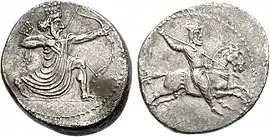
Soon after this Egyptian defeat, Phoenicia, Anatolia and Cyprus declared their independence from Persian rule. In 343 BC, Artaxerxes committed responsibility for the suppression of the Cyprian rebels to Idrieus, prince of Caria, who employed 8000 Greek mercenaries and forty triremes, commanded by Phocion the Athenian, and Evagoras, son of the elder Evagoras, the Cypriot monarch.[21][22] Idrieus succeeded in reducing Cyprus.
Sidon campaign of Belesys and Mazaeus
Artaxerxes initiated a counter-offensive against Sidon by commanding the satrap of Syria Belesys and Mazaeus, the satrap of Cilicia, to invade the city and to keep the Phoenicians in check.[23] Both satraps suffered crushing defeats at the hands of Tennes, the Sidonese king, who was aided by 40,000 Greek mercenaries sent to him by Nectanebo II and commanded by Mentor of Rhodes. As a result, the Persian forces were driven out of Phoenicia.[22]
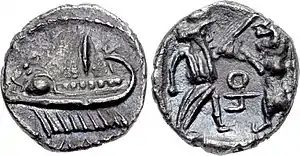
Sidon campaign of Artaxerxes
After this, Artaxerxes personally led an army of 330,000 men against Sidon. Artaxerxes' army comprised 300,000 foot soldiers, 30,000 cavalry, 300 triremes, and 500 transports or provision ships. After gathering this army, he sought assistance from the Greeks. Though refused aid by Athens and Sparta, he succeeded in obtaining a thousand Theban heavy-armed hoplites under Lacrates, three thousand Argives under Nicostratus, and six thousand Æolians, Ionians, and Dorians from the Greek cities of Anatolia. This Greek support was numerically small, amounting to no more than 10,000 men, but it formed, together with the Greek mercenaries from Egypt who went over to him afterwards, the force on which he placed his chief reliance, and to which the ultimate success of his expedition was mainly due.
The approach of Artaxerxes sufficiently weakened the resolution of Tennes that he endeavoured to purchase his own pardon by delivering up 100 principal citizens of Sidon into the hands of the Persian king, and then admitting Artaxerxes within the defences of the town. Artaxerxes had the 100 citizens transfixed with javelins, and when 500 more came out as supplicants to seek his mercy, Artaxerxes consigned them to the same fate. Sidon was then burnt to the ground, either by Artaxerxes or by the Sidonian citizens. Forty thousand people died in the conflagration.[22] Artaxerxes sold the ruins at a high price to speculators, who calculated on reimbursing themselves by the treasures which they hoped to dig out from among the ashes.[24] Tennes was later put to death by Artaxerxes.[25] Artaxerxes later sent Jews who supported the revolt to Hyrcania, on the south coast of the Caspian Sea.[26][27]
Second Egyptian Campaign (343 BC)
The reduction of Sidon was followed closely by the invasion of Egypt. In 343 BC, Artaxerxes, in addition to his 330,000 Persians, had now a force of 14,000 Greeks furnished by the Greek cities of Asia Minor: 4,000 under Mentor, consisting of the troops which he had brought to the aid of Tennes from Egypt; 3,000 sent by Argos; and 1000 from Thebes. He divided these troops into three bodies, and placed at the head of each a Persian and a Greek. The Greek commanders were Lacrates of Thebes, Mentor of Rhodes and Nicostratus of Argos while the Persians were led by Rhossaces, Aristazanes, and Bagoas, the chief of the eunuchs. Nectanebo II resisted with an army of 100,000 of whom 20,000 were Greek mercenaries. Nectanebo II occupied the Nile and its various branches with his large navy. The character of the country, intersected by numerous canals, and full of strongly fortified towns, was in his favour and Nectanebo II might have been expected to offer a prolonged, if not even a successful, resistance. But he lacked good generals, and over-confident in his own powers of command, he was able to be out-manoeuvred by the Greek mercenary generals and his forces eventually defeated by the combined Persian armies.[22]
After his defeat, Nectanebo hastily fled to Memphis, leaving the fortified towns to be defended by their garrisons. These garrisons consisted of partly Greek and partly Egyptian troops; between whom jealousies and suspicions were easily sown by the Persian leaders. As a result, the Persians were able to rapidly reduce numerous towns across Lower Egypt and were advancing upon Memphis when Nectanebo decided to quit the country and flee southwards to Ethiopia.[22] The Persian army completely routed the Egyptians and occupied the Lower Delta of the Nile. Following Nectanebo fleeing to Ethiopia, all of Egypt submitted to Artaxerxes. The Jews in Egypt were sent either to Babylon or to the south coast of the Caspian Sea, the same location that the Jews of Phoenicia had earlier been sent.
After this victory over the Egyptians, Artaxerxes had the city walls destroyed, started a reign of terror, and set about looting all the temples. Persia gained a significant amount of wealth from this looting. Artaxerxes also raised high taxes and attempted to weaken Egypt enough that it could never revolt against Persia. For the 10 years that Persia controlled Egypt, believers in the native religion were persecuted and sacred books were stolen.[29] Before he returned to Persia, he appointed Pherendares as satrap of Egypt. With the wealth gained from his reconquering Egypt, Artaxerxes was able to amply reward his mercenaries. He then returned to his capital having successfully completed his invasion of Egypt.
Later years
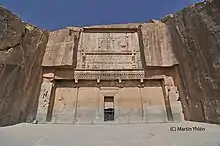
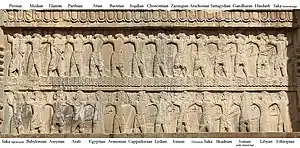
After his success in Egypt, Artaxerxes returned to Persia and spent the next few years effectively quelling insurrections in various parts of the Empire so that a few years after his conquest of Egypt, the Persian Empire was firmly under his control. Egypt remained a part of the Persian Empire until Alexander the Great's conquest of Egypt.
After the conquest of Egypt, there were no more revolts or rebellions against Artaxerxes. Mentor of Rhodes and Bagoas, the two generals who had most distinguished themselves in the Egyptian campaign, were advanced to posts of the highest importance. Mentor, who was governor of the entire Asiatic seaboard, was successful in reducing to subjection many of the chiefs who during the recent troubles had rebelled against Persian rule. In the course of a few years Mentor and his forces were able to bring the whole Asian Mediterranean coast into complete submission and dependence.
Bagoas went back to the Persian capital with Artaxerxes, where he took a leading role in the internal administration of the Empire and maintained tranquility throughout the rest of the Empire. During the last six years of the reign of Artaxerxes III, the Persian Empire was governed by a vigorous and successful government.[22]
The Persian forces in Ionia and Lycia regained control of the Aegean and the Mediterranean Sea and took over much of Athens’ former island empire. In response, Isocrates of Athens started giving speeches calling for a ‘crusade against the barbarians’ but there was not enough strength left in any of the Greek city-states to answer his call.[30]
Although there weren't any rebellions in the Persian Empire itself, the growing power and territory of Philip II of Macedon in Macedon (against which Demosthenes was in vain warning the Athenians) attracted the attention of Artaxerxes. In response, he ordered that Persian influence was to be used to check and constrain the rising power and influence of the Macedonian kingdom. In 340 BC, a Persian force was dispatched to assist the Thracian prince, Cersobleptes, to maintain his independence. Sufficient effective aid was given to the city of Perinthus that the numerous and well-appointed army with which Philip had commenced his siege of the city was compelled to give up the attempt.[22] By the last year of Artaxerxes' rule, Philip II already had plans in place for an invasion of the Persian Empire, which would crown his career, but the Greeks would not unite with him.[31]
In late August/late September 338 BC, the court eunuch and chiliarch (hazahrapatish) Bagoas orchestrated the poisoning and subsequent death of Artaxerxes III through the latters own physician.[lower-alpha 2][33][34] Artaxerxes III's early death proved to be a problematic issue for Persia,[35] and may have played a role in the weakening of the country.[36] The majority of Artaxerxes III's sons, with the exception of Arses and Bisthanes, were also murdered by Bagoas.[4] Bagoas, acting as kingmaker, put the young Arses (Artaxerxes IV) on the throne.[4][36][37]
Legacy
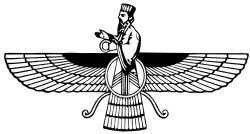
Historically, kings of the Achaemenid Empire were followers of Zoroaster or heavily influenced by Zoroastrian ideology. The reign of Artaxerxes II saw a revival of the cult of Anahita and Mithra, when in his building inscriptions he invoked Ahura Mazda, Anahita and Mithra and even set up statues of his gods.[38] Mithra and Anahita had until then been neglected by true Zoroastrians—they defied Zoroaster’s command that God was to be represented only by the flames of a sacred fire.[25] Artaxerxes III is thought to have rejected Anahita and worshipped only Ahuramazda and Mithra.[39] An ambiguity in the cuneiform script of an inscription of Artaxerxes III at Persepolis suggests that he regarded the father and the son as one person, suggesting that the attributes of Ahuramazda were being transferred to Mithra. Strangely, Artaxerxes had ordered that statues of the goddess Anâhita be erected at Babylon, Damascus and Sardis, as well as at Susa, Ecbatana and Persepolis.[40]
Artaxerxes' name appears on silver coins (modeled on Athenian ones) issued while he was in Egypt. The reverse bears an inscription in an Egyptian script, saying "Artaxerxes Pharaoh. Life, Prosperity, Wealth".[41]
In literature
It is thought by some that the Book of Judith could have been originally based on Artaxerxes' campaign in Phoenicia, as Holofernes was the name of the brother of the Cappadocian satrap Ariarathes, the vassal of Artaxerxes. Bagoas, the general that finds Holofernes dead, was one of the generals of Artaxerxes during his campaign against Phoenicia and Egypt.[42][43]
Construction

There is evidence for a renewed building policy at Persepolis, but some of the buildings were unfinished at the time of his death. Two of his buildings at Persepolis were the Hall of Thirty-Two Columns, the purpose of which is unknown, and the palace of Artaxerxes III. The unfinished Army Road and Unfinished Gate, which connected the Gate of All Nations and the One-hundred Column Hall, gave archaeologists an insight into the construction of Persepolis.[18] In 341 BC, after Artaxerxes returned to Babylon from Egypt, he apparently proceeded to build a great Apadana whose description is present in the works of Diodorus Siculus.
The Nebuchadnezzar II palace in Babylon was expanded during the reign of Artaxerxes III.[44] Artaxerxes' tomb was cut into the mountain behind the Persepolis platform, next to his father's tomb.
Family
Artaxerxes III was the son of Artaxerxes II and Statira. Artaxerxes II had more than 115 sons by many wives, most of them however were illegitimate. Some of Ochus' more significant siblings were Rodogune, Apama, Sisygambis, Ocha, Darius and Ariaspes, most of whom were murdered soon after his ascension.[30]
His children were:
By Atossa.[36]
By an unknown wife:
- Bisthanes
- Parysatis II, future wife of Alexander the Great.[18]
- Sisygambis maybe was his daughter, or of Ostanes or of an Uxian leader. Her son was Darius III.
He also married:
Notes
- According to the classical Greek writer Plutarch, Artaxerxes III was also supported by his half-sister and lover Atossa, who was allegedly at the same time a wife of Artaxerxes II. Joan. M Bigwood calls the report "fictional" and dismisses it as "an account designed to illustrate the misdeeds of a ruler widely believed by the Greek and Roman sources to be one of the most vicious of Persian kings, and those of his equally unattractive paramour Atossa."[9]
- According to a Babylonian tablet, Artaxerxes III "went to his fate", which is often understood to indicate death from natural causes. However, the same wording is also used to refer to the death of Xerxes I (r. 486 – 465 BC), who was in reality assassinated by his son.[32]
References
- Schmitt 1986b, pp. 654–655.
- Frye 1983, p. 178.
- Wiesehöfer 1986, pp. 371–376.
- Schmitt 1986a, pp. 658–659.
- Briant 2002, pp. 680–681.
- Briant 2002, p. 680.
- Dandamaev 1989, p. 306.
- Briant 2002, p. 681.
- Bigwood 2009, pp. 326–328.
- Waters 2014, p. 193.
- Ruzicka 2012, p. 155.
- Ruzicka 2012, pp. 155–156.
- Ruzicka 2012, p. 156.
- Ruzicka 2012, pp. 156–157.
- Ruzicka 2012, p. 157.
- Ruzicka 2012, pp. 157–158.
- Briant 2002, p. 687.
- Artaxerxes III PersianEmpire.info History of the Persian Empire
- Miller, James M. (1986). A History of Ancient Israel and Judah. John Haralson Hayes (photographer). Westminster John Knox Press. pp. 465. ISBN 0-664-21262-X.
- Ruzicka 2012, p. 161.
- Newton, Sir Charles Thomas; R.P. Pullan (1862). A History of Discoveries at Halicarnassus, Cnidus & Branchidæ. Day & son. pp. 57.
- "Artaxerxes III Ochus ( 358 BC to 338 BC )". Retrieved March 2, 2008.
- Heckel, Waldemar (2008). Who's Who in the Age of Alexander the Great: Prosopography of Alexander's Empire. John Wiley & Sons. p. 172. ISBN 9781405154697.
- Rawlinson, George (1889). "Phœnicia under the Persians". History of Phoenicia. Longmans, Green. Archived from the original on July 20, 2006. Retrieved March 10, 2008.
- Meyer, Eduard (1911). . In Chisholm, Hugh (ed.). Encyclopædia Britannica. 2 (11th ed.). Cambridge University Press. pp. 661–663.
- "The Legend Of Gog And Magog". Archived from the original on March 15, 2008. Retrieved March 10, 2008.
- Bruce, Frederick Fyvie (1990). The Acts of the Apostles: The Greek Text with Introduction and Commentary. Wm. B. Eerdmans Publishing. p. 117. ISBN 0-8028-0966-9.
- Kovacs, Frank L. (2002). "Two Persian Pharaonic Portraits". Jahrbuch für Numismatik und Geldgeschichte. R. Pflaum. pp. 55–60.
- "Persian Period II". Archived from the original on February 17, 2008. Retrieved March 6, 2008.
- "Chapter V: Temporary Relief". Archived from the original on June 19, 2008. Retrieved March 1, 2008.
- "Philip of Macedon Philip II of Macedon Biography". Archived from the original on March 14, 2008. Retrieved March 7, 2008.
- Waters 2014, p. 198.
- Waters 2014, p. 197.
- Dandamaev 1989, p. 312.
- Schmitt 1986a, pp. 658-659.
- LeCoq 1986, p. 548.
- Briant 2002, p. 690.
- J. Varza; Dr. M. Soroushian. "The Achaemenians, Zoroastrians in Transition". Archived from the original on March 26, 2008. Retrieved March 5, 2008.
- Hans-Peter Schmidt (January 14, 2006). "i. Mithra In Old Indian And Mithra In Old Iranian". Archived from the original on March 3, 2008. Retrieved March 5, 2008.
- "The Origins Of Mithraism". Archived from the original on February 7, 2008. Retrieved March 5, 2008.
- "Silver tetradrachm of Artaxerxes III". Retrieved March 24, 2018.
- Lare, Gerald A. "The Period of Jewish Independence". Archived from the original on February 25, 2008. Retrieved March 10, 2008.
- Paul Ingram. "The Book of Judith". Retrieved March 10, 2008.
- Wigoder, Geoffrey (2006). The Illustrated Dictionary & Concordance of the Bible. Sterling Publishing Company. p. 131. ISBN 1-4027-2820-4.
- Brosius, Maria (1996). Women in Ancient Persia, 559–331 BC. Oxford University Press. p. 67. ISBN 0-19-815255-8.
- Curtius Rufus 3.13.13
- "Artaxerxes III". Encyclopaedia Iranica. Retrieved July 14, 2019.
Bibliography
Ancient works
- Arrian, The Anabasis of Alexander.
- Diodorus Siculus, Bibliotheca historica.
- Justin, Epitome of the Philippic History of Pompeius Trogus.
Modern works
- Bigwood, Joan M. (2009). "Incestuous' Marriage in Achaemenid Iran: Myths and Realities". Klio. 913: 311–341. doi:10.1524/klio.2009.0015. S2CID 191672920.
- Briant, Pierre (2002). From Cyrus to Alexander: A History of the Persian Empire. Eisenbrauns. pp. 1–1196. ISBN 9781575061207.
- Brosius, Maria (2000). "Women i. In Pre-Islamic Persia". Encyclopaedia Iranica, Vol. London et al.
- Brosius, Maria (2020). A History of Ancient Persia: The Achaemenid Empire. John Wiley & Sons. pp. 1–288. ISBN 9781119702542.
- Dandamaev, Muhammad A. (1989). A Political History of the Achaemenid Empire. Brill. ISBN 978-9004091726.
- Frye, R. N. (1983). "The political history of Iran under the Sasanians". In Yarshater, Ehsan (ed.). The Cambridge History of Iran, Volume 3(1): The Seleucid, Parthian and Sasanian Periods. Cambridge: Cambridge University Press. ISBN 0-521-20092-X.
- LeCoq, P. (1986). "Arses". Encyclopaedia Iranica, Vol. II, Fasc. 5. p. 548.
- Ruzicka, Stephen (2012). Trouble in the West: Egypt and the Persian Empire, 525–332 BC. Oxford University Press. pp. 1–311. ISBN 9780199766628.
- Schmitt, R. (1986a). "Artaxerxes III". Encyclopaedia Iranica, Vol. II, Fasc. 6. pp. 658–659.
- Schmitt, R. (1986b). "Artaxerxes". Encyclopaedia Iranica, Vol. II, Fasc. 6. pp. 654–655.
- Schmitt, R. (1986c). "Artaxerxes II". Encyclopaedia Iranica, Vol. II, Fasc. 6. pp. 656–658.
- Waters, Matt (2014). Ancient Persia: A Concise History of the Achaemenid Empire, 550–330 BCE. Cambridge University Press. pp. 1–272. ISBN 9781107652729.
- Wiesehöfer, Joseph (1986). "Ardašīr I i. History". Encyclopaedia Iranica, Vol. II, Fasc. 4. pp. 371–376.
External links
| Wikimedia Commons has media related to Artaxerxes III. |
| Wikibooks has a book on the topic of: Iranian History/The Era of the Three Dariuses |
| Wikisource has original text related to this article: |
Artaxerxes III Born: c. 425 BC Died: 338 BC | ||
| Preceded by Artaxerxes II |
Great King (Shah) of Persia 358–338 BC |
Succeeded by Artaxerxes IV Arses |
| Preceded by Nectanebo II |
Pharaoh of Egypt XXXI Dynasty 343–338 BC | |
